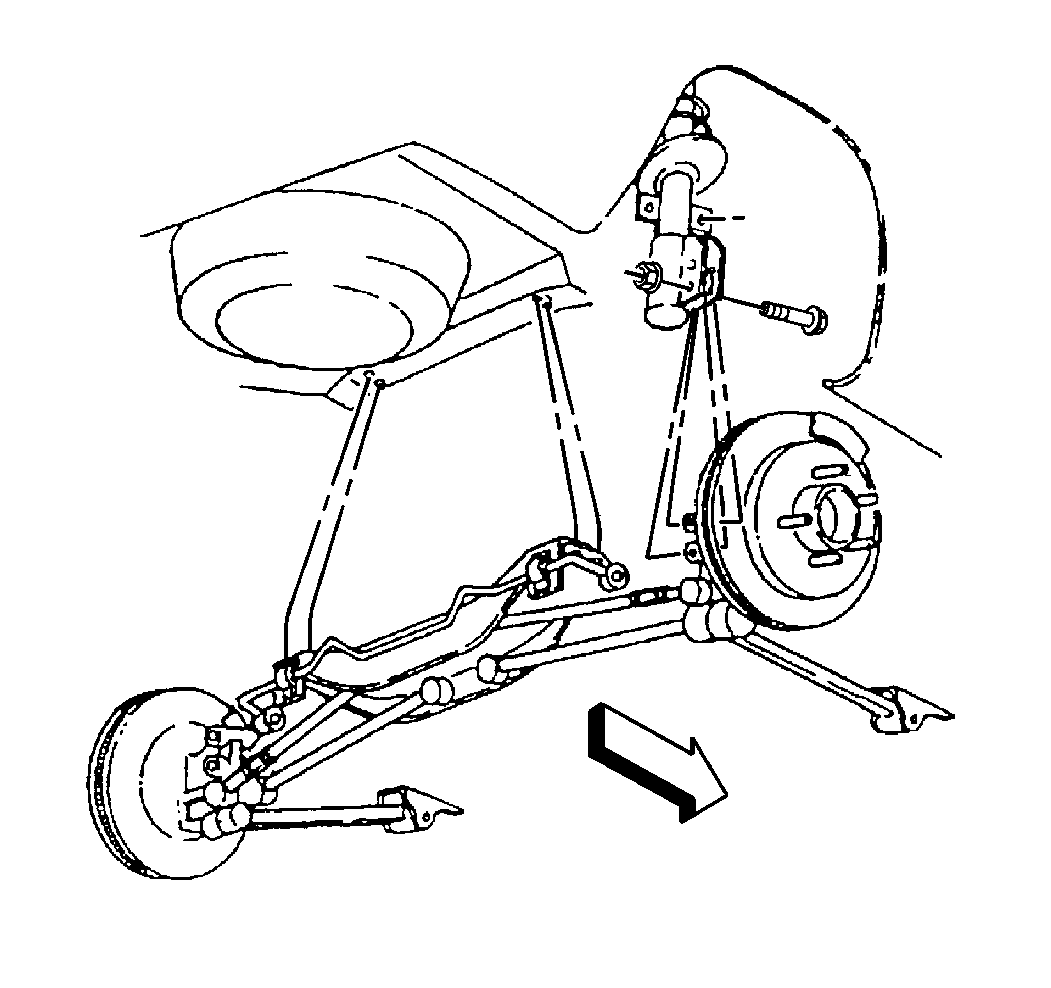
The rear suspension utilizes coil springs over struts, and lightweight cast iron knuckles. Each wheel is mounted to a tri-link independent suspension system. The Tri-Link was selected because of inherently decoupled (isolation from the road) characteristics.The three links are identified as the inverted "U" channel trailing arm and the tubular front and rear rods.
Parallel links allow the rear wheels to reflect rearward when the rear wheels hit a road hazard, without moving the toe angle positive. The advantage of this suspension system is the reduction of unsprung and overall weight. Independent action of the rear wheels improves handling. The rods control the lateral wheel deflection.
Several techniques have been employed to achieve this independent wheel movement. The Tri-Link design can be compared to a right angle. The wheel is located at the right angle formed by the rods and the trailing arm. The ends of the tri-links are hinged in order to provide vertical wheel travel. The solid links force the wheel to travel through a controlled arc so that fore-aft position is determined by the trailing arm, and lateral position is determined by the rods.
Aside from maintaining geometric wheel location, each portion of the suspension has additional functions. The knuckle supports the brake caliper. All brake torque and braking forces are transmitted through the tri-links and the strut. The final duty of the rods is to maintain the camber angle of the wheel throughout its travel and allow for setting toe. The overall result of this rear suspension geometry is to maintain the rear wheels in a near vertical position at all times.
Direct double-acting struts are attached to the body and to the knuckle.
The stabilizer shaft is attached to the strut and extends rearward, where the shaft connects to the underbody reinforcement by two rubber bushings and mounting brackets.
A non-serviceable unit hub and bearing is bolted to the knuckle. This hub and bearing is a sealed, maintenance free unit.
Check the suspension system periodically for the following:
| • | Shock absorbency |
| • | Bushing durability |
| • | Tightness of attaching bolts |
| • | Visible damage |
| • | Misalignment |
| • | Excessive wear |
